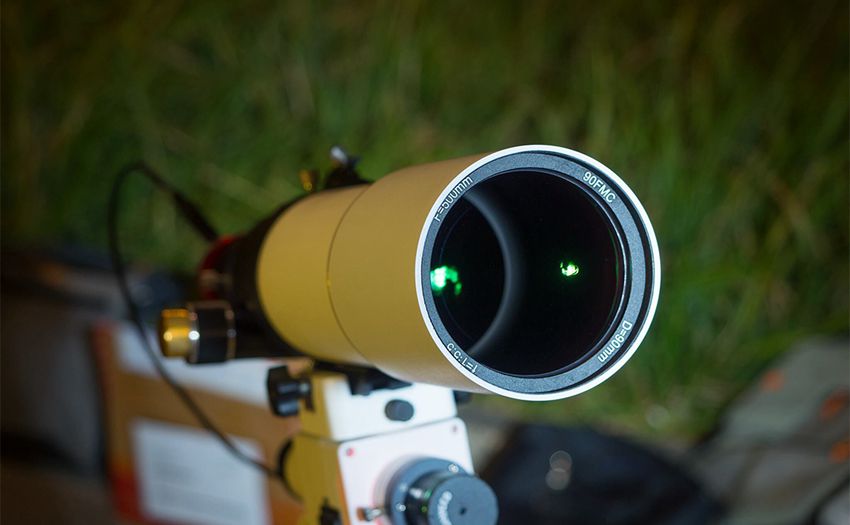The journey of refractors

The journey of refractors
If you are enthusiastic about this hobby, then you know refractors. That's a kind of telescope which beloved by many amateur astronomers all over the world, also the ones we are trying to make our best. From the very first light of the first refractor on earth to today, it has been such a long history which I want to share with you in this blog.
Galileo
The telescope has been invented before Galileo. Based on a detailed understanding of the telescope's imaging principle, Galileo began to grind the lenses himself. He continued to study the principle of lens imaging in order to make a telescope with a higher magnification. Finally, in 1610, he produced the refracting telescope with the highest magnification at that time, which could magnify objects by 33 times.
The imaging principle of the Galileo telescope is as follows:
A convex lens with a long focal length is used as the objective lens, and a concave lens with a short focal length is used as the eyepiece. According to the imaging formula: Magnification = focal length of objective lens/focal length of the eyepiece, the longer the focal length of the objective lens, or the shorter the focal length of the eyepiece, the higher the magnification.
Galileo made many important discoveries with this telescope, his outstanding contribution paved the way to astronomical telescope observation.
Huygens
The convex lens has serious chromatic aberration as an objective lens. Then Huygens came into play. He found that if the convex lens is made with a long focal length and a small curvature while the focal ratio is long, the chromatic aberration will be greatly reduced. Ever since refractor telescopes are getting longer and longer, the focal ratio has even reached F25. With such a long focal ratio, the chromatic aberration is almost invisible, and the observed effect is greatly improved. The focal length of the objective lens is longer, so the magnification is naturally much higher. It was indeed a very meaningful improvement at the time.
Hall
Hall found that crown glass and flint glass have different refractive indices for light and different dispersion capabilities. Crown glass with lower refractive index and smaller dispersion power as a convex lens, flint glass with higher refractive index and larger dispersion power as a concave lens. After optical design and calculation, using flint glass and crown glass together as the objective lens can greatly offset the dispersion problem of the single lens. This is the achromatic design. This achromatic structure has been used today.
ED&APO
In fact, the correction to chromatic aberration by this chromatic is still imperfect, and the chromatic aberration can be seen with a higher magnification. So ED lens is here. ED means Extra-low Dispersion.
ED refracting telescopes are relatively high-end refracting telescopes, but it is also divided into two levels, one is a general ED mirror, and the other is called an apochromatic (APO) telescope. A general ED telescope objective lens is usually composed of two pieces of glass, one of which is ED glass. While APO requires at least a combination of three lenses. The triplet APO is a classic type of APO refraction.
Svbony’s refracting telescopes
We Svbony are dedicated to making fine refractors for all amateur astronomers all over the world. Right now, we have some very good refractors in our arsenal already, I believe you will be happy with them.
SV503 ED family
Svbony APO family-To be continued...








